Themed collection Solar Chemistry and Photocatalysis - environmental applications

Introduction by the guest editors
The guest editors introduce the collection of papers from the 8th European Meeting on Solar Chemistry & Photocatalysis: Environmental Applications (SPEA 8), held in Thessaloniki between 25th and 28th June, 2014.
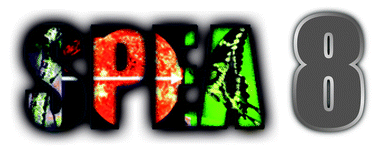
Photochem. Photobiol. Sci., 2015,14, 500-500
https://doi.org/10.1039/C5PP90009C
Environmental considerations on solar disinfection of wastewater and the subsequent bacterial (re)growth
Solar disinfection of wastewater is under study, as a process initiated on-site and continuing in nature. The environmental factors implicating the process (light intensity, intermittence and receiving water matrix) are also under study.
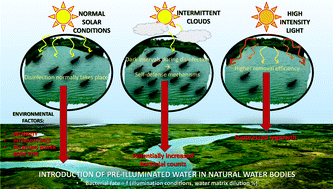
Photochem. Photobiol. Sci., 2015,14, 618-625
https://doi.org/10.1039/C4PP00266K
Modeling of degradation kinetic and toxicity evaluation of herbicides mixtures in water using the UV/H2O2 process
A kinetic model to interpret the simultaneous oxidation of a mixture of herbicides (glyphosate and 2,4-D) in water using the UV/H2O2 process was proposed. Good agreement of the experimental data and the model were achieved.

Photochem. Photobiol. Sci., 2015,14, 608-617
https://doi.org/10.1039/C4PP00269E
Photocatalytic and photoelectrocatalytic degradation of the antibacterial agent ciprofloxacin
Photocatalytic and photoelectrocatalytic degradation of the antibacterial fluoroquinolone drug, ciprofloxacin, has been studied in the presence of nanocrystalline titania films supported on glass slides or transparent electrodes.
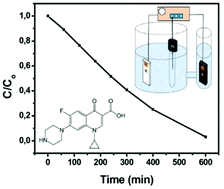
Photochem. Photobiol. Sci., 2015,14, 603-607
https://doi.org/10.1039/C4PP00377B
Photosensitized oxidation of 9,10-dimethylanthracene with singlet oxygen by using a safranin O/silica composite under visible light
The photo-oxidation of DMA could be carried out in 3 steps: the first step is the photosensitized production of 1O2 near the surface of the composite; the second step is the diffusion of 1O2 from the surroundings of the surface to the solvent and the third step is the homogeneous reaction between 1O2 and DMA.
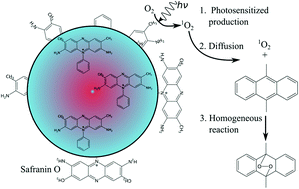
Photochem. Photobiol. Sci., 2015,14, 597-602
https://doi.org/10.1039/C4PP00261J
Degradation and toxicity assessment of the nonionic surfactant Triton™ X-45 by the peroxymonosulfate/UV-C process
This paper discusses the degradation and mineralization of the nonionic surfactant and octylphenol polyethoxylate (OPEO) Triton™ X-45 via the peroxymonosulfate (PMS)/UV-C treatment process. The inhibitory effect of aqueous OPEO solution and its oxidation products was investigated by employing a battery of toxicity tests.

Photochem. Photobiol. Sci., 2015,14, 569-575
https://doi.org/10.1039/C4PP00230J
The effect of photocatalytic oxidation on molecular size distribution profiles of humic acid
Photocatalytic oxidation leads to a drastic change in excitation emission matrix (EEM) fluorescence features of humic acid molecular size fractions.

Photochem. Photobiol. Sci., 2015,14, 576-582
https://doi.org/10.1039/C4PP00262H
Transparent thin films of Cu–TiO2 with visible light photocatalytic activity
Thin films of Cu–TiO2 with high transparency were prepared using a low-cost dip-coating method. The visible light activity of Cu–TiO2 in the aqueous solution was confirmed in relation to model organic compounds.
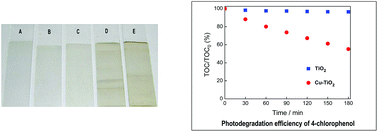
Photochem. Photobiol. Sci., 2015,14, 591-596
https://doi.org/10.1039/C4PP00271G
Combined cytotoxic effect of UV-irradiation and TiO2 microbeads in normal urothelial cells, low-grade and high-grade urothelial cancer cells
Paper shows that internalization of the TiO2 microbeads followed by the UV-irradiation is an efficient approach for killing cancer urothelial cells. Additionally, differentiation dependent differences in the sensitivity of the cells to the UV-irradiation are shown, and a model of photocatalytic treatment of the in vivo bladder cancer is presented.
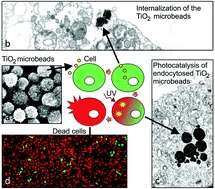
Photochem. Photobiol. Sci., 2015,14, 583-590
https://doi.org/10.1039/C4PP00272E
Green photocatalytic organic transformations by polyoxometalates vs. mesoporous TiO2 nanoparticles: selective aerobic oxidation of alcohols
Decatungstate supported on mesoporous TiO2 nanoparticle assemblies catalyze the selective and efficient oxidation of aromatic alcohols under “green” oxidation conditions. An electron transfer mechanism was predominated under UV-vis irradiation.

Photochem. Photobiol. Sci., 2015,14, 563-568
https://doi.org/10.1039/C4PP00268G
Photocatalytic degradation of ofloxacin and evaluation of the residual antimicrobial activity
Photocatalytic processes (UV/TiO2 and UV/TiO2/H2O2) were used for ofloxacin degradation. The antimicrobial activity of ofloxacin solutions subjected to degradation processes was evaluated.

Photochem. Photobiol. Sci., 2015,14, 556-562
https://doi.org/10.1039/C4PP00256C
Steam reduction of CO2 on Pd/TiO2 catalysts: a comparison between thermal and photocatalytic reactions
The performances of Pd/TiO2 catalysts in the steam reduction of CO2 were analyzed in a photocatalytic and in a thermo-catalytic system. The comparison showed the superiority of the photocatalytic route.

Photochem. Photobiol. Sci., 2015,14, 550-555
https://doi.org/10.1039/C4PP00252K
Synthesis of nitrogen-doped ZnO by sol–gel method: characterization and its application on visible photocatalytic degradation of 2,4-D and picloram herbicides
The photocatalytic performance of modified 30% wt. N-ZnO nanoparticles under visible light irradiation was demonstrated by the oxidation of picloram and 2,4-D.
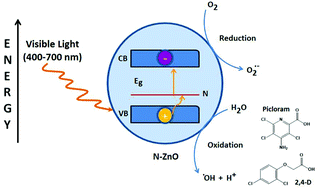
Photochem. Photobiol. Sci., 2015,14, 536-542
https://doi.org/10.1039/C4PP00273C
Ultraviolet-activated persulfate oxidation of methyl orange: a comparison between artificial neural networks and factorial design for process modelling
In this work, the degradation of the azo dye methyl orange in model aqueous solutions by UVC light-induced persulfate oxidation was studied.
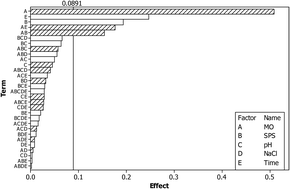
Photochem. Photobiol. Sci., 2015,14, 528-535
https://doi.org/10.1039/C4PP00277F
Wastewater remediation using a spiral shaped reactor for photochemical reduction of hexavalent chromium
The application of photochemical reduction of Cr(VI) in the treatment of wastewater from the electroplating industry was studied, and a spiral shaped reactor was designed and constructed (SSR).

Photochem. Photobiol. Sci., 2015,14, 501-505
https://doi.org/10.1039/C4PP00263F
Comparison of the solar photocatalytic activity of ZnO–Fe2O3 and ZnO–Fe0 on 2,4-D degradation in a CPC reactor
A comparative study of the catalytic activity of ZnO–Fe2O3 and ZnO–Fe0 0.5 wt% materials was carried out for the degradation of commercial 2,4-D herbicide using a compound parabolic collector (CPC) reactor.

Photochem. Photobiol. Sci., 2015,14, 543-549
https://doi.org/10.1039/C4PP00274A
Visible light induced photocatalytic inactivation of bacteria by modified titanium dioxide films on organic polymers
A transparent polypropylene foil pre-treated with a low temperature plasma and covered with sensitized, nanocrystalline TiO2 thin film, appears to be a useful, self-sterilizing material activated upon visible light irradiation.
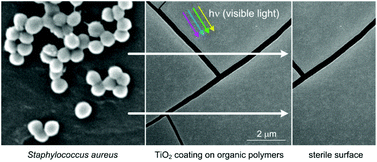
Photochem. Photobiol. Sci., 2015,14, 514-519
https://doi.org/10.1039/C4PP00270A
Study of the generated genetic polymorphisms during the photocatalytic elimination of Klebsiella pneumoniae in water
Klebsiella pneumoniae is considered to be an emerging pathogen persisting under extreme environmentally stressed conditions.
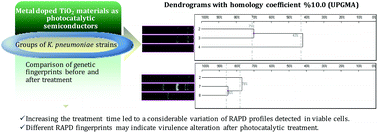
Photochem. Photobiol. Sci., 2015,14, 506-513
https://doi.org/10.1039/C4PP00291A
Photocatalytic degradation of pentachlorophenol by N–F–TiO2: identification of intermediates, mechanism involved, genotoxicity and ecotoxicity evaluation
Heterogeneous photocatalysis using N–F codoped TiO2 was successfully applied for degradation, mineralization as well as for genotoxicity and ecotoxicity elimination of PCP in the aqueous phase.
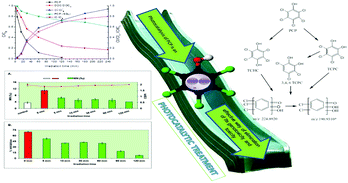
Photochem. Photobiol. Sci., 2015,14, 520-527
https://doi.org/10.1039/C4PP00254G
About this collection
This themed issue contains a selection of papers presented at the 8th European Meeting on Solar Chemistry & Photocatalysis: Environmental Applications – SPEA8 – held in Thessaloniki, Greece, between 25th and 28th of June, 2014.